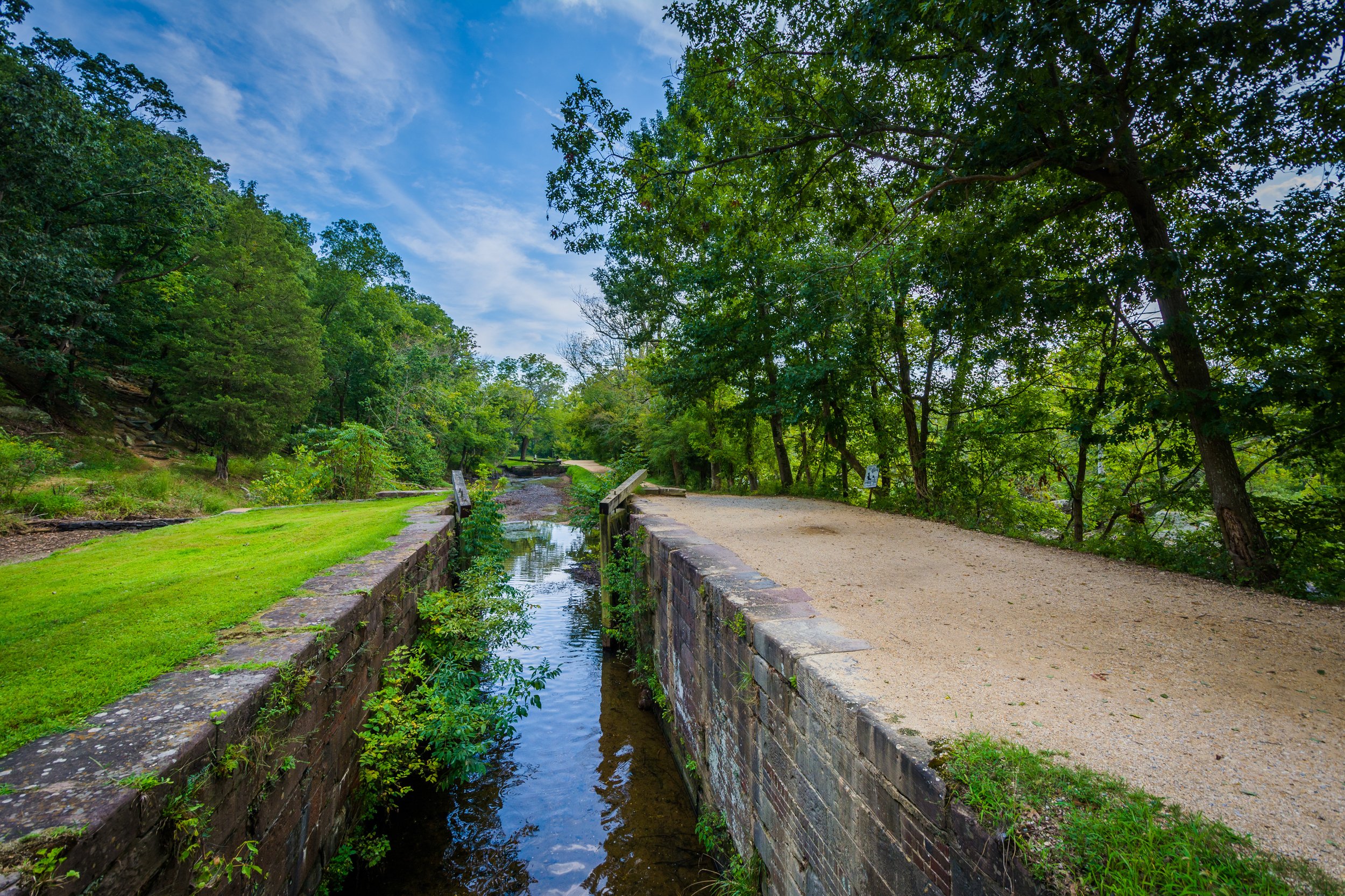Lagniappe: A Gift: The Chesapeake and Ohio (C&O) Canal
/The Chesapeake and Ohio (C&O) Canal was conceived by George Washington, the ever-entrepreneurial Father of Our Country, as a means of transporting coal and other goods from the American “West” (Ohio) down to the new nation’s capital, with the landing at his home in Mount Vernon providing a convenient (and profitable) waystation for the import/export of goods. Thanks to Great Falls and other, lesser natural obstacles, the upper Potomac is unnavigable for all but the most intrepid kayakers. With a canal and its intricate lock system, however, Washington envisioned barges floating their way down to Georgetown and beyond and then turning around to take the uphill trip home.
Construction of the Canal was begun in 1828 and completed in 1850. Damage from flooding, the advent of the railroad and the rise of trucking spelled an end to the C&O Canal’s 74 year tenure as a trade route, and for some years thereafter it fell into progressive disrepair. Happily for those who love the peace afforded by green spaces in a densely populated and trafficked urban area, in 1954 Supreme Court Justice William Douglas helped to spearhead an advocacy movement that protected and rejuvenated the Canal and its towpath, and in 1971 the Canal was designated a National Historical Park. Today its towpath extends 184 miles north, from urban Georgetown to Cumberland in the beguiling mountains of northwestern Maryland.
The Canal and its towpath are places possessed of great natural beauty and a fascinating relevance to our American history. As an example of the latter, the river, Canal and towpath wind close to the scene of the bloodiest single day in American military history, September 17, 1862. In the South that collision of armies typically is referred to as “the battle of Sharpsburg” (Maryland), while in the North it is designated “Antietam” for the pretty little creek that runs across the battlefield on its way to the Potomac. On that day, in Sharpsburg, at a time when the population of the United States numbered a mere 31 million, over 7,000 Americans perished. To offer some perspective, on June 6, 1944, our population was 138 million, and on that day 4,400 brave American soldiers died on the Normandy beaches.
Less sanguinary are the numerous towns and villages that dot the region surrounding the Canal and its towpath: Poolesville, Point of Rocks, Shepherdstown and, of course, Harpers Ferry, to name a few. Sharpsburg itself is charming, and standing on “Burnside’s Bridge” at the nearby battlefield one is hard-pressed to imagine men struggling and dying in the shallow creek that flows below. And yet so they did. One was my great-grandfather, a 21-year-old Virginian who took a bad wound that day but survived to live another 70 years. History permeates this land, and however we with our current preoccupations may seek to erase or alter those portions of history we find distasteful, history is immutable, unchangeable and impervious to our efforts to have it be otherwise. Faulkner wrote – and during his candidacy President Obama courageously echoed – The past is never dead. It’s not even past. Amen.
The Canal is special. I urge any visitors who come to the area to avail themselves of the attractions offered by the C&O Canal and its towpath. Rent a bike on Water Street in Georgetown and simply pedal a few miles upriver to Fletcher’s Cove. If it’s a hot day, on the way back stop off at Water Street’s Berliner or any of the many other Georgetown venues on the streets above the river, sit outside and enjoy a cold drink while you people-watch. If you’re feeling more ambitious, rent a bike at Griffin Cycle or Big Wheel Bikes in Bethesda and set off on the paved Capital Crescent Trail. If you’re feeling yet more adventurous, exit the Trail at one of several access points to the towpath (hard-packed gravel and dirt). Ask for directions when you rent your bike. Or skip the bike and simply pull off at one of the locks along the Clara Barton Parkway to take in the beauty all around you.
I visit the towpath often. Running along the path on dark winter evenings with my dog I’ve heard bobcat screeching as they mated amongst the trees on the eastern ridge above the Canal and coyote yipping their approval in the distance. In the summer a million invisible frogs serenade us as we pass by. I see yearling white-tail deer drinking from the Canal’s waters, the blue heron patiently awaiting another fish or frog, the blooming of the mimosa and the short, sweet emergence of spring’s wildflowers: mayapple, bloodroot, trout lily and jack-in-the-pulpit. Even their names are a joy.
For me, a migraineur - for all of us, migraineurs and non-migraineurs alike - precious places such as this one provide the gift of balance that permits us to transcend mere survival into living.





